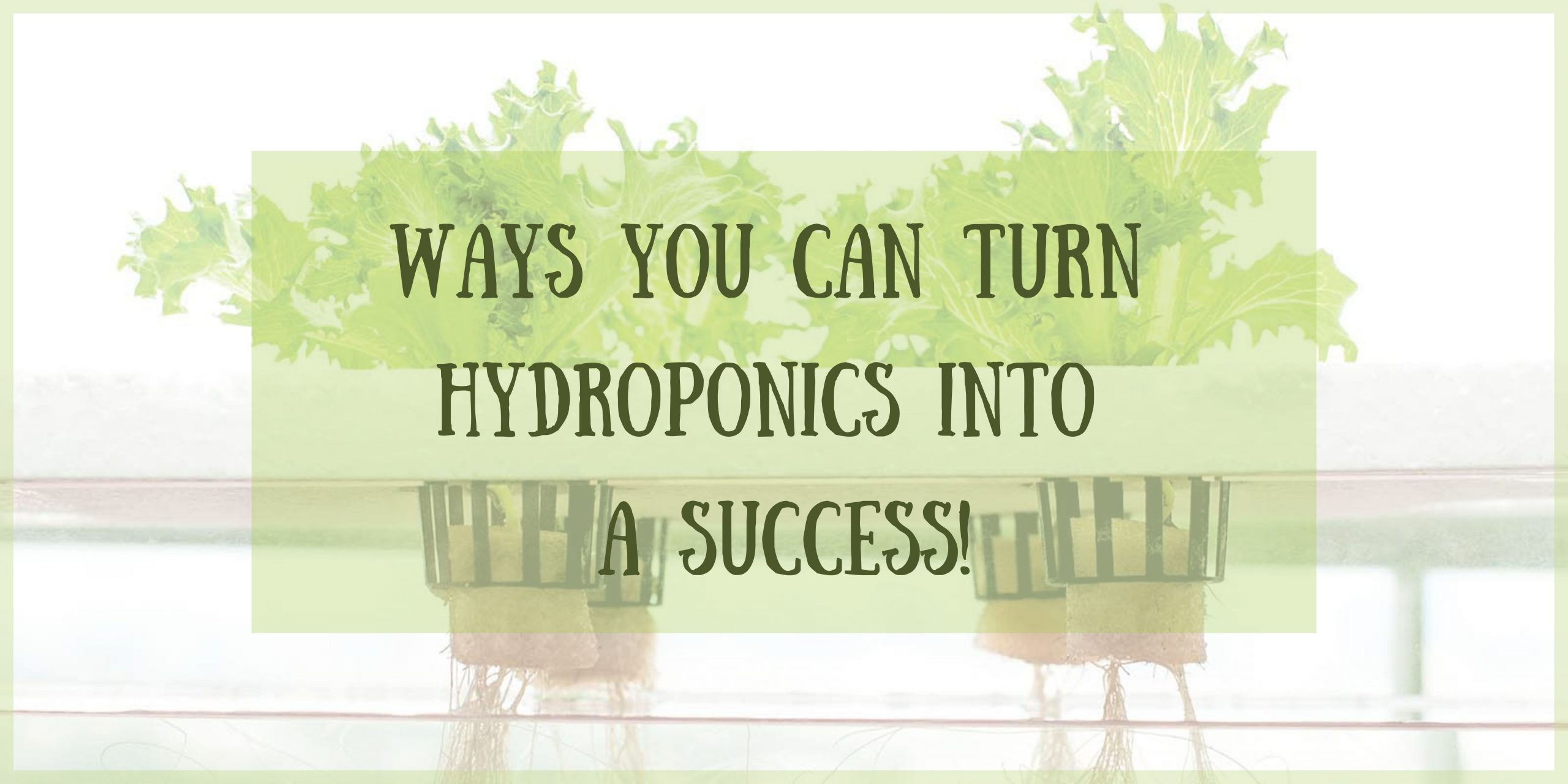
Ways you can turn Hydroponics into a success!
Hydroponic system for beginners and how it works are explained in this post. Hydroponics is a type of gardening in which plants are grown in a solution of water and nutrients rather than in soil like in organic farming. Plants and vegetables grow faster in a hydroponic system than in soil, and hydroponic systems can be utilised all year, therefore, providing a nutritious diet of vegetables throughout the year. Hydroponically grown plants produce more, take up less space, and use less water than conventionally grown plants. A hydroponic system might also be a good option for apartment residents and city dwellers who don’t have access to an outdoor garden plot. Establishing your own hydroponic indoor grow system can be intimidating. You may feel that you will require a great deal of specialised equipment. However, you do not need to be an expert to grow your own plants hydroponically. You can assemble your own system at a low cost and with little effort. Drill and screwdriver are the necessary tools for this hydroponic system. Water which is known as the elixir of life is the main component, seedlings, dry or liquid hydroponic fertiliser, growing tray, growing medium, bucket or basin for water reservoir, cotton or nylon rope, and optional grow light are all required.
Three Hydroponic Systems for Beginners
To get started with hydroponic growth, three ways are recommended for beginners: wick, water culture, and ebb and flow systems. The Wick system is the simplest and best form of hydroponic system for beginners. The wick systems have no moving components or electrical parts and are therefore mechanically the simplest systems. Water-hungry plants, like lettuce and tomatoes, should not be used in this arrangement because the wicks will run out of fertiliser solution too quickly. Microgreens, herbs, and peppers are the ideal candidates for this method. Another simple system to set up is a water culture, sometimes known as a lettuce raft. The plants are housed in a Styrofoam platform that floats on top of the nutrient-rich water in the reservoir. However, unlike the wick system, a raft system will require aeration of the water. This approach works best for growing leaf lettuce, but it only works for a few other plants. It’s not good to use it on long-lived plants like tomatoes. A flood and drain system, often known as an ebb and flow system, is slightly more complicated in design but incredibly adaptable. The growing medium is flooded with a water-nutrient solution, subsequently draining back into the reservoir.
Advanced Hydroponic Systems
Nutrition film technology and aeroponics are examples of advanced hydroponic systems. In the Nutrition film technology method, a reservoir of water-nutrient solution flows through a growing tray, where plant roots are suspended and collect nutrients from the solution as it moves through the growing medium. Using this method, the ebb and flow system is transformed into a continuous flow system that does not experience periodic interruptions. A nutrition film system is ideal for fast-growing plants like lettuce, spinach, radishes, and herbs. Aeroponics is a more advanced hydroponic system used. Here, the plant roots are suspended in the air and misted with a water and fertiliser mix every few minutes. It’s an extremely successful procedure, but it necessitates the use of complex pumps and misters. The plant roots can quickly dry out and perish if the apparatus fails. The systems mentioned above are complex, and they are not included in the hydroponic system for beginners.
Culminating Perspective
The majority of food plants require at least six hours of direct sunlight every day, with 12 to 16 hours being preferable. Make sure your lighting system is set on a timer so that the lights come on and off at the same time every day. High-intensity discharge light fixtures, usually involving high-pressure sodium or metal halide bulbs, are the optimum lighting for a hydroponics system. Temperatures between 68 and 70 degrees Fahrenheit are ideal, and the optimal humidity level for a hydroponic grow room is between 40% and 60% relative humidity. Your grow chamber should also contain enough carbon dioxide to assist your plants to develop faster. The best way to supply your plants with CO2 is to keep the air moving. Invest in a fan or other air circulation equipment if needed. Hydroponic water should have a pH of 5.8 to 6.2, which is somewhat acidic. Organic and synthetic hydroponic nutrients and fertilisers are available in liquid and dry forms. Use hydroponic nutrients, not regular fertilisers. One of the benefits of the hydroponic system for beginners is that the owner receives a consistent supply of fresh, nourishing produce, saving numerous trips to the grocery. Hydroponics system comes with its pros and cons.